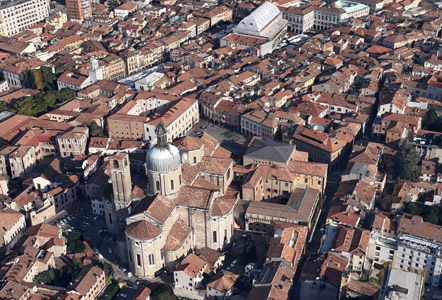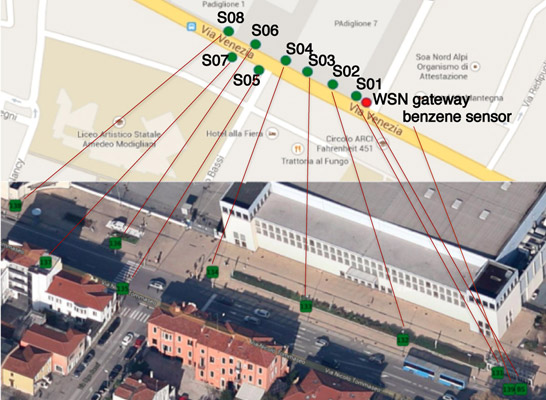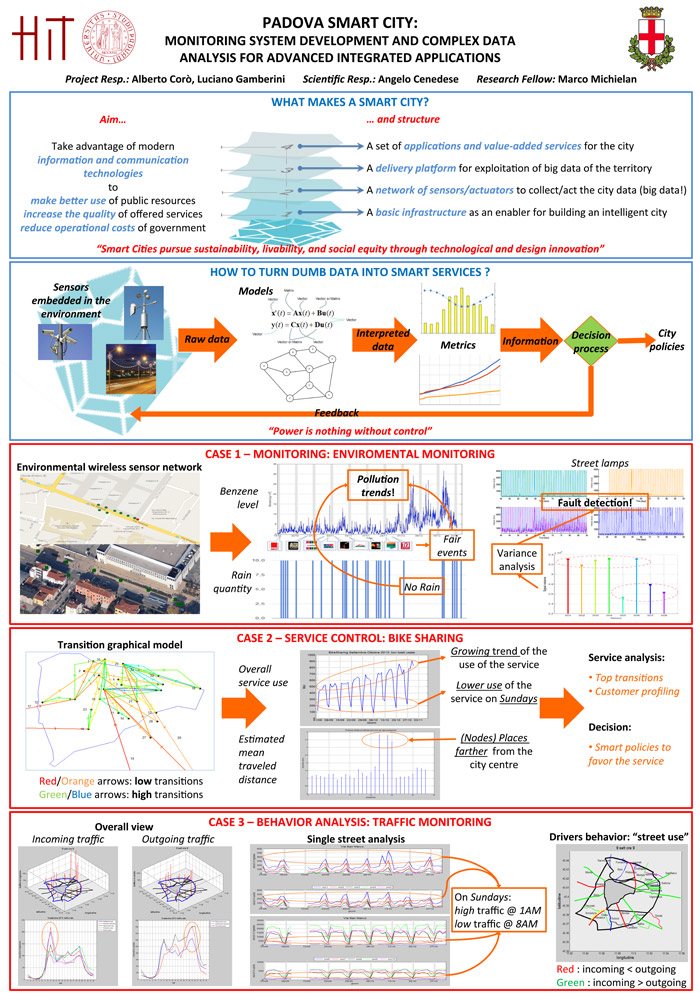
Monitoring System Development and Complex Data Analysis for Advanced Integrated Applications
 | "Smart Cities pursue sustainability, livability, and social equity through technological and design innovation" (MIT research group): with this aim in mind we believe that urban analytics is a key step to understand our space and to realize smart services. Specifically designed cyberphysical systems are used in conjunction with standard monitoring stations to sense and provide multilevel, heterogeneous and pervasive information. This information is put in relation through the time and geolocalization of the data and the physical communication and transportation networks of the city, acting like a biological nervous system. Data-driven analysis highlights the behaviors that emerge from the interplay of human related activities and the natural phenomena. | |||||||||||
| - | - | - | - | - | - | - | - | - | - | - |
How to turn dumb data into smart services?
 | To this aim we start from sensors embedded in the environment and heterogeneous measurements to build stochastic and graphical models (e.g. weigthed graphs, Hidden Markov models) to describe phenomena. These are used: - in the analysis phase to allow the interpretation of the data, the definition of metrics and the generation of information - in the synthesis phase, to ease the decision process that define city policies. Three areas of investigation are considered: - Environmental monitoring (from pollution to public lighting) - Public service control (e.g. bike sharing) - Human related behavior analysis (e.g. traffic monitoring) | |||||||||||||
| - | - | - | - | - | - | - | - | - | - | - | - | - |
| Poster | Detailed Project Information | |||||||||
 | Project Responsibles: prof. Luciano Gamberini, DPG & HIT, University of Padova Alberto Corò, Comune di Padova Coordinator: prof. A. Cenedese, DEI & HIT, University of Padova Research Fellow: Marco Michielan, HIT, University of Padova Partnership: Comune di Padova Time frame: 15 months, February 2014 | |||||||||
| - | - | - | - | - | - | - | - | - |